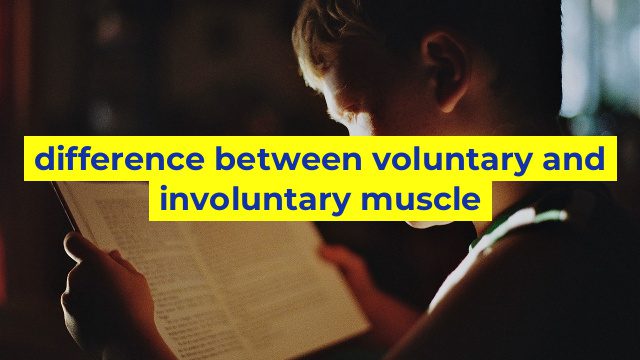The Key Differences between Voluntary and Involuntary Muscle
When it comes to the human body, there are countless types of muscles that help carry out various activities. However, muscles can be broadly categorized as either voluntary or involuntary. While both types of muscles play an important role in the functioning of the body, they differ vastly in terms of their control and working mechanism.
Voluntary Muscles-
As the name suggests, voluntary muscles are those that we have conscious control over. These muscles are responsible for a variety of activities that we can control, such as walking, writing, chewing, and talking. Voluntary muscles are usually attached to the bones by tendons and are also known as skeletal muscles as they help us move our skeletal structure.
These types of muscles are under our conscious control, which means we can choose to move them or not move them. The neurons in our brain send signals to our muscles, which command them to contract or relax, resulting in controlled movements.
Involuntary Muscles-
Involuntary muscles, on the other hand, are those that are not under our conscious control. They operate automatically, without any conscious effort or decision from our brain. They are responsible for carrying out vital functions of the body, such as digestion, heartbeat, and breathing, among others.
Involuntary muscles are found in various parts of the body, including organs, blood vessels, and glands. They are also known as smooth muscles or non-striated muscles, as their structure is different from that of voluntary muscles.
Unlike voluntary muscles, which are controlled by neurons in the brain, involuntary muscles are controlled by the autonomic nervous system. This system is made up of the sympathetic and parasympathetic systems, which work together to regulate various bodily functions.
Key Differences-
The main differences between voluntary and involuntary muscles can be summarized as follows:
Voluntary Muscles:
- Are under conscious control.
- Play a role in movement and locomotion.
- Attach to the skeletal structure.
- Operate more quickly and provide greater strength.
- Are controlled by neurons in the brain.
Involuntary Muscles:
- Are not under conscious control.
- Perform vital functions such as digestion, circulation, and respiration.
- Are found in various organs and glands.
- Operate more slowly and provide less strength.
- Are controlled by the autonomic nervous system.
In conclusion, voluntary and involuntary muscles are two types of muscles that have distinct functions within the human body. While voluntary muscles play a crucial role in our conscious movements, involuntary muscles carry out vital functions that maintain our body’s overall health and well-being. Understanding the difference between the two can help us appreciate the complexity of our body’s functioning and how it is all interconnected.
Table difference between voluntary and involuntary muscle
| Voluntary Muscle | Involuntary Muscle |
|---|---|
| Controlled by conscious effort | Not controlled by conscious effort |
| Mainly found in skeletal muscles | Mainly found in smooth muscles and cardiac muscles |
| Allow movement of bones | Regulate internal body functions, such as blood flow and digestion |
| Can be trained and developed through exercise | Cannot be directly trained or developed through exercise |
| Can be fatigued and cause soreness after intense exercise | Do not experience fatigue or soreness |


